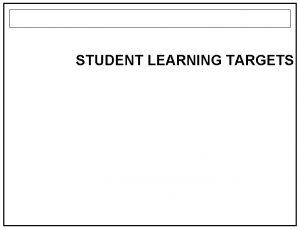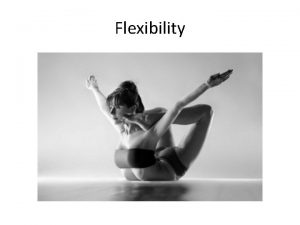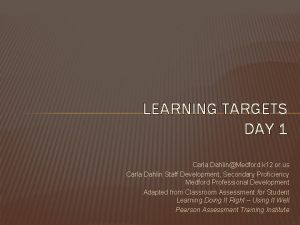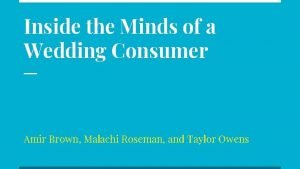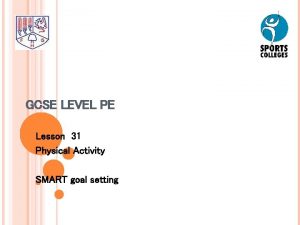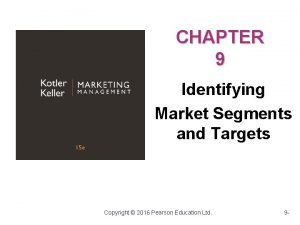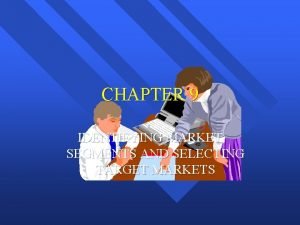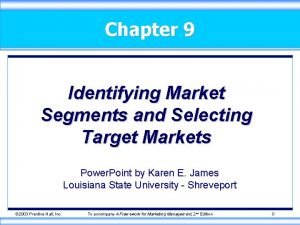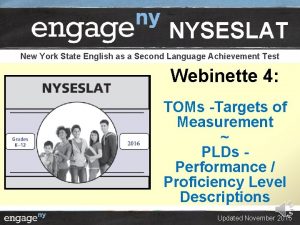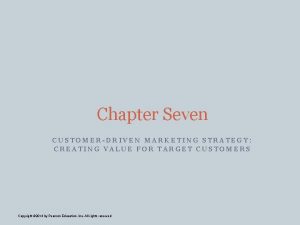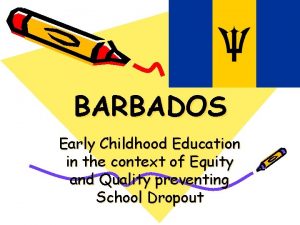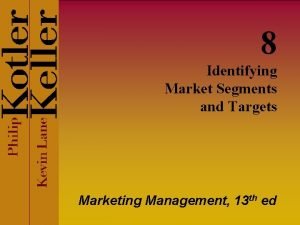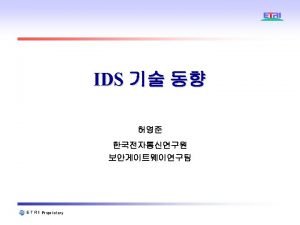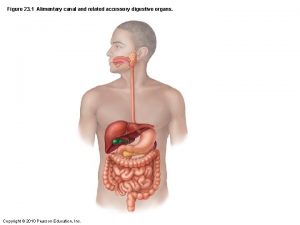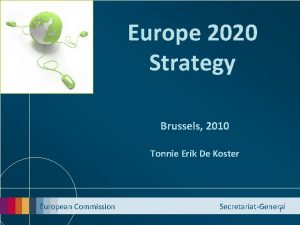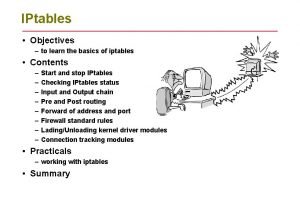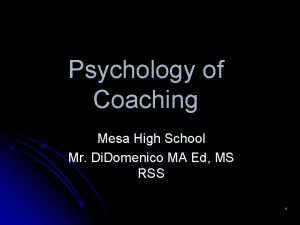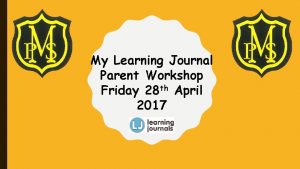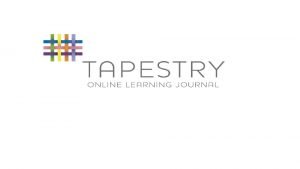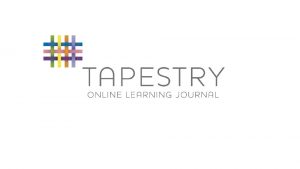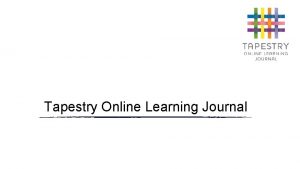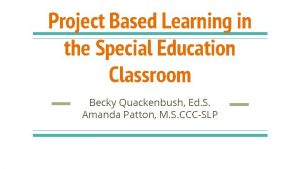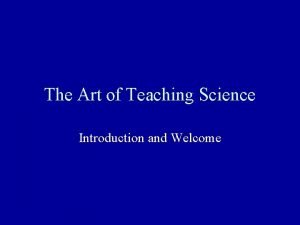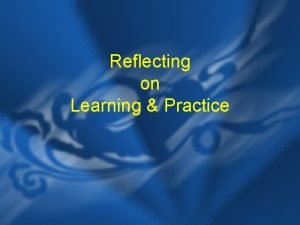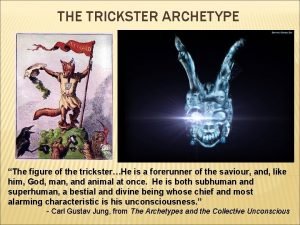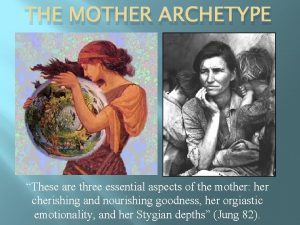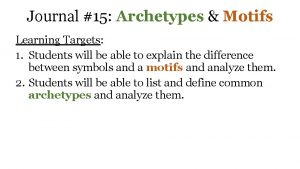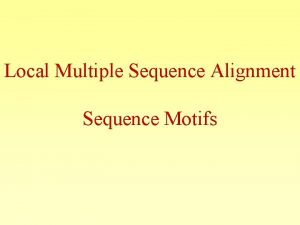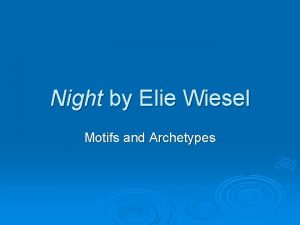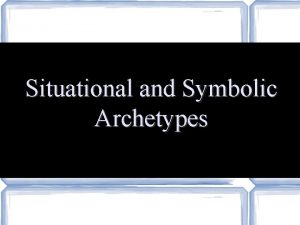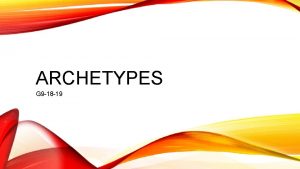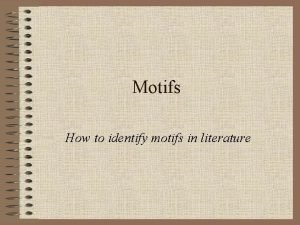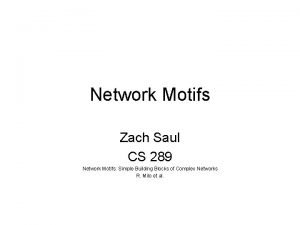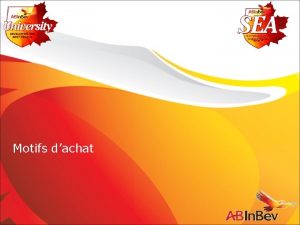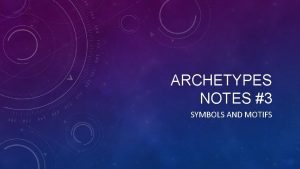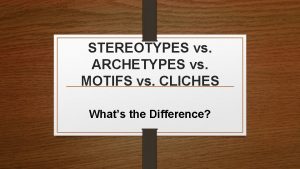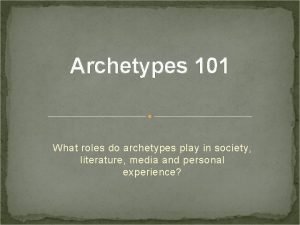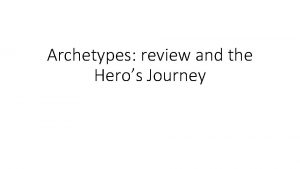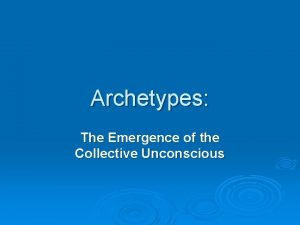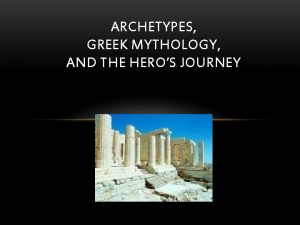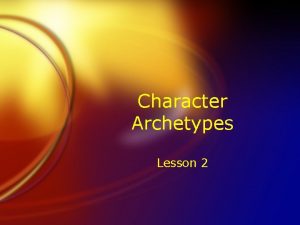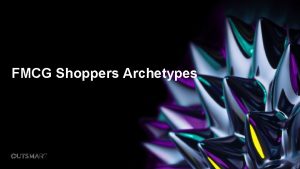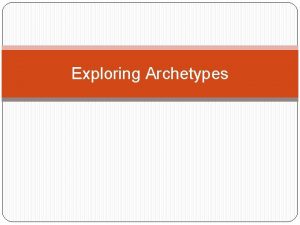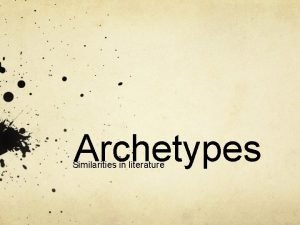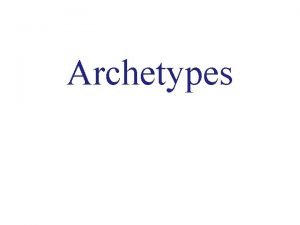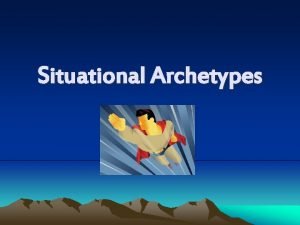Journal 29 Archetypes Motifs Learning Targets 1 Students











































- Slides: 43

Journal #29: Archetypes & Motifs Learning Targets: 1. Students will be able to identify the difference between a symbol and a motif and consider its impact on a work of literature. 2. Students will be able to list common archetypes. 3. Students will be able to define archetype and consider its impact on a work of literature.

Symbol and Motif: What’s the difference? Symbol • A reoccurring object in literature that figuratively represents another idea or thing and is almost always related to theme. Motif • A reoccurring object in literature that figuratively represents another idea or thing and is almost always related to theme.

Some of the things we’ve thought were symbols, in past novels, were actually motifs!!

Some of the things we’ve thought were symbols, in past novels, were actually motifs!! Symbol • Writing Poetry Motif • Women sitting by the window: 1. 2. 3. 4. 5. Esperanza’s grandmother Mamacita dreaming of home Esperanza and 4 Skinny Trees Rafeala drinking papaya juice Minerva sitting by a broken window

Some of the things we’ve thought were symbols, in past novels, were actually motifs!! Symbol • The golden carp • The Virgin of Guadalupe • Ultima’s owl Motif • Dreams: • Antonio’s dreams • Water: 1. 2. 3. 4. 5. The river Holy Water The presence of the river The underground lake The Marez family

Discuss with a partner to create a hypothesis: What’s the difference between a symbol and a motif?

Definitions Symbol Motif • A reoccurring object, literary • A specific and static devices**, or plot reoccurring object in structure** in literature that figuratively represents another idea or, always related to theme or the author’s purpose. thing and is almost always related to theme. • Motifs appear in different contexts (i. e. water appearing in different ways) or be dynamic • Motifs can be reoccurring literary devices

Motif: • A (1) reoccurring object, (2) literary device**, or (3) plot structure** in literature that figuratively represents another idea or thing, always related to theme or the author’s purpose. • Motifs appear in different contexts (i. e. water appearing in different ways) or be dynamic • Motifs can be reoccurring literary devices Three different types of Motifs: 1. Reoccurring Dynamic Objects 2. Literary Devices 3. Plot Structures

1. Reoccurring Dynamic Objects (symbolic motifs) • What are the different types of water in Bless Me, Ultima? How many?


2. Repetition of Literary/Language Devices Slaughterhouse Five is a satirical anti-war novel about a man who is ‘stuck in time’ and keeps ending up at the bombing of Dresden during WWII. The phrase “So it goes. ” appears over the 105 page novel. 99 times Look at your page with random pieces of Slaughterhouse Five: How does Kurt Vonnegut use the motif of “So it goes. ” to build his anti-war message? Let’s write a thesis!


2. Repetition of Literary/Language Devices Example: Characterization of Horse “’Bullshit!’ Horse cried out. They called him Horse because his face looked like the face of a horse, and he was always stomping at the ground. ” (Anaya 36). “Horse neighed loudly. ‘Hey, Florence, top this one!’ Again he cleared his throat and spit. ” (Anaya 37). “His dark, wild eyes held me hypnotically, and I could hear the deep sounds a horse makes inside his chest when he is ready to buck. ” (Anaya 39). “That year a pissing contest was held behind the school house, and Horse won, ” (Anaya 76).

2. Repetition of Literary/Language Devices Example: Characterization of Horse “Horse's … I thought he would bolt. His big horse-eyes looked up at me nervously. ” (Anaya 155). “Horse smiled into my face. … His horse-eyes were wild with excitement and his big, yellow teeth chomped on something that smelled like spoiled eggs. ” (Anaya 202). “Horse whinnied and reared up and Bones was on him” (Anaya 195). “Horse, sensing something he could not understand, began to get nervous. ” (Anaya 209).

3. Repetition of Plot Structures 1. People confessing to Antonio: • Lupito • Narciso • The boys 2. “Cures”: each cure is different but represents the juxtaposition between Ultima’s power and the Church’s • Chapter Seis • Chapter Diez • Chapter Viente 3. Antonio running from/towards death: • Luptio • Narcisco • Chapter Vientedos 4. Antonio’s Dreams

Archetypes

What are the similarities of these characters?

What are the similarities of these characters?

What are the similarities between these stories?

Thinking Questions Write down and answer each question: 1. Why do so many stories share a similar plot? 2. Why do so many different characters in stories fit into a type like ‘sidekick’ or ‘hero’ or ‘evil villain’? 3. How does culture shape this?

Archetypes Theory Definition Archetypes are universal (1) motifs, (2) character types, and (3) plots that appear in literature, movies, oral tradition, myths, etc. across all time and all* cultures.

Plot (Situation) Archetypes 1. The Quest 2. The Fall (from high to low standing) 3. The Rebellion 4. Loss of Innocence 5. The Creation Story 6. The Initiation 7. The Task 8. Nature vs. the Mechanical World 9. Good vs. Evil 10. Coming-of-Age 11. The Unhealable Wound 12. Death and Rebirth 13. The Ritual 14. Cinderella (Rags-to-Riches)

Example: Cinderella (Rags to Riches)

Cinderella (Rags to Riches)

Cinderella (Rags to Riches) and Syncretism

1. 2. 3. 4. 5. 6. 7. 8. 9. 10. 11. 12. 13. Character Archetypes The Hero The Mentor The Sage The Sidekick The Friendly Beast Evil Incarnate (The Dark Lord) The Outcast The Fallen Hero The Damsel in Distress The Betrayer The Unfaithful Lover The Innocent One (pure soul) The Earth Mother 14. 15. 16. 17. 18. 19. 20. 21. 22. 23. The Temptress The Reluctant Hero The Warrior The Star-Crossed Lovers The Bully The Mad-Scientist The Trickster The Initiates The Scapegoat The Wanderer

Archetypal Motifs 1. Water: purification, cleansing, source of life and sustenance 2. Fire 3. Desert 4. Sunrise 5. Darkness 6. Being Dirty 7. Sun/ Stars/ Moon 8. Dreams 9. “Donning” of Armor 10. Colors: Red: blood, anger, passion, violence Red Gold: greatness, value, wealth Gold Green: fertility, luxury, growth Green Blue: peace, serenity Blue

Archetypes… So what? Talk with a neighbor and be ready to share: Why might archetypes matter? How can archetypes help us understand literature?

Archetypes… So what? • Archetypes appear in stories from all cultures across all of recorded history. Psychologist Carl Jung suggested that this means that there are certain universal thinking patterns and understandings that are common among all peoples. • Jung hypothesized that part of the human mind contained a collective unconscious shared by all members of the human species, a sort of universal, primal memory. This posits that the stories we tell and characters who inhabit them are biologically predetermined? • It is the universal part of the definition that is important

Task With a partner create a poster for your assigned archetype(s) that: A. Label the archetype B. Provide a description C. List 3 common examples D. Has a colorful drawing Fill in your chart and tape it into your notes when finished on others’ posters.

The Mentor The Fall B. These individuals serve as B. This describes a descent from a teachers or counselors to the initiate higher to lower state of being, an archetype. Serve as role-models or experience which might involve motherly figures often. They teach defilement, moral corruption, or loss of by example the skills necessary to innocence. This fall is often survive the journey or quest accompanied by a punishment, such as archetypes. an expulsion from paradise. C. Dumbledore, Gandalf the Grey, C. Adam & Eve, Oedipus in Sophocles’ Ultima Oedipus Rex, Lear in Shakespeare’s King Lear

Motif: Being Dirty Symbolizes: loss of innocence, poverty, loss

Task Create a poster for your assigned archetype that includes the following information: A. Label the archetype B. Provide a description C. List 3 common examples D. Has a image There will be links on Smith’s website for the information. Due Monday 3/5

Characters: Options for Posters 1. The Hero 2. The Betrayer 3. The Initiate 4. The Outcast 5. The Damsel in Distress 6. The Earthmother 7. Evil Incarnate 8. The Temptress 9. The Sidekick 10. The Star-Crossed Lovers 11. The Scapegoat 12. The Sage Situations: 1. 2. 3. 4. The Quest The Unhealable Wound The Task The Initation Motifs: 1. Water 2. Sunrise/Light

Adventure Time: “City of Thieves” http: //www. hulu. com/watch/763646

HW Thesis On a separate piece of paper rewrite thesis about water as an archetypal motif in Bless Me, Ultima. Then color code your thesis: Purple = 1) Specific and 2) clear Green = 1) Arguable and 2) answering the question Red = So what? and/or effect on Bless Me, Ultima and/or complex

Purple Green Red

1 st Period Purple • “Bless Me, Ultima” • Rudolfo Anaya • Archetype/ archetypal • Motif • Water Green Red • “water is an archetype for destruction” • “powerful and destructive” • “cleansing” • “symbolizes purity” • “water will destroy sinners according to the golden carp” • “allows Antonio to recognize/consider other powers besides the Catholic God” • “shape Antonio’s potential future” • “change the way Antonio’s” • “change the readers understanding of the book” • “create a sense of magical realism”

2 nd Period Purple • “Bless Me, Ultima” • “Water” • “Motif” • “archetypes” or “archetypal” • Rudolfo Anaya Green • “cleansing” • “enemy” • Purity • “Represents…” • “water is an archetype for destruction” Red • “reflects the way water is seen” • “effects Antonio because of the figurative water in his blood” • “Water occurs in many ways” • “change the readers understanding of the book” • “create a sense of magical realism” • “allows Antonio to recognize/consider other powers besides the Catholic God”

3 rd Period Purple • “Bless Me, Ultima” • “Antonio” • Rudolfo Anaya • Water • Archetype / Archetypal • Ultima • Motif Green • Sin • Symbolizes… • Purity • Cleanliness/cleansing/ • Destruction Red • “leading to Antonio’s religious struggle” • “cleanse the town of its sins” • “illustrates Antonio’s loss of innocence” • “change the readers understanding of the book” • “create a sense of magical realism” • “allows Antonio to consider other powers besides the Catholic God”

5 th Period Purple • Motif • Water • Archetype / Archetypal • Rudolfo Anaya • Bless Me, Ultima • Antonio Green • Purification / Purify • Death and Rebirth • “symbolizes…” • Life • Hope • Cleansing • Punishment • Sin Red • “change the readers understanding of the book” • “create a sense of magical realism” • “allows Antonio to recognize/consider other powers besides the Catholic God” • “Understand how certain scenarios playout”

Evidence

Analysis– Analysis write 1 sentence of all 3 types 1. Explains concrete specific details (evidence) when they are unclear. evidence • DON’T RESTATE THE OBVIOUS. 2. Draws analytical conclusions about concrete specific details. • BE CAREFUL NOT TO MAKE TOO BIG OF LEAPS, however you are making leaps! 3. Draws connections from concrete specific details to both Body (paragraph) Thesis Statement and thesis. • CONNECTIONS SHOULD BE LOGICAL & WELL-DEVELOPED. • AVOID REPETITIVE CONNECTIVE COMMENTARY.
 Learning target
Learning target Writing learning targets
Writing learning targets Agonist antagonist muscles
Agonist antagonist muscles Cross projection sketch
Cross projection sketch Knowledge targets examples
Knowledge targets examples Learning targets knowledge, reasoning, skill product
Learning targets knowledge, reasoning, skill product Surveying course of rizal
Surveying course of rizal Cuadro comparativo e-learning y b-learning
Cuadro comparativo e-learning y b-learning Warehouse management objectives
Warehouse management objectives Jim crow laws in what region or regions did it exist
Jim crow laws in what region or regions did it exist Brides magazine targets consumers who are in
Brides magazine targets consumers who are in Targets of change
Targets of change Smart targets gcse pe
Smart targets gcse pe Identifying market segments and targets chapter 9
Identifying market segments and targets chapter 9 Identifying market segments and targets
Identifying market segments and targets Identifying market segments and targets chapter 9
Identifying market segments and targets chapter 9 Nyseslat proficiency levels
Nyseslat proficiency levels The nfl targets several different market segments
The nfl targets several different market segments Early childhood education barbados
Early childhood education barbados Five patterns of target market selection
Five patterns of target market selection Physical targets
Physical targets Djids
Djids Identifying market segments and targets
Identifying market segments and targets Parathyroid gland chief cell
Parathyroid gland chief cell Digestive system
Digestive system Tonnie de koster
Tonnie de koster Europe 2020 targets
Europe 2020 targets Smarterbalanced.alohahsap.org
Smarterbalanced.alohahsap.org On training targets for supervised speech separation
On training targets for supervised speech separation How to restart iptables
How to restart iptables Single segment concentration
Single segment concentration Educational sport psychology specialists
Educational sport psychology specialists My learning journal
My learning journal Tapestry online learning journal
Tapestry online learning journal Tapestry learning journal
Tapestry learning journal Tapestry online learning journal
Tapestry online learning journal What is tapestry
What is tapestry Project based learning for students with special needs
Project based learning for students with special needs Activating students as owners of their own learning
Activating students as owners of their own learning Students reflection on their learning sample
Students reflection on their learning sample Students reflection on their learning sample
Students reflection on their learning sample At cobb middle school students with learning disabilities
At cobb middle school students with learning disabilities Define trickster archetype
Define trickster archetype The earth mother archetype examples
The earth mother archetype examples

